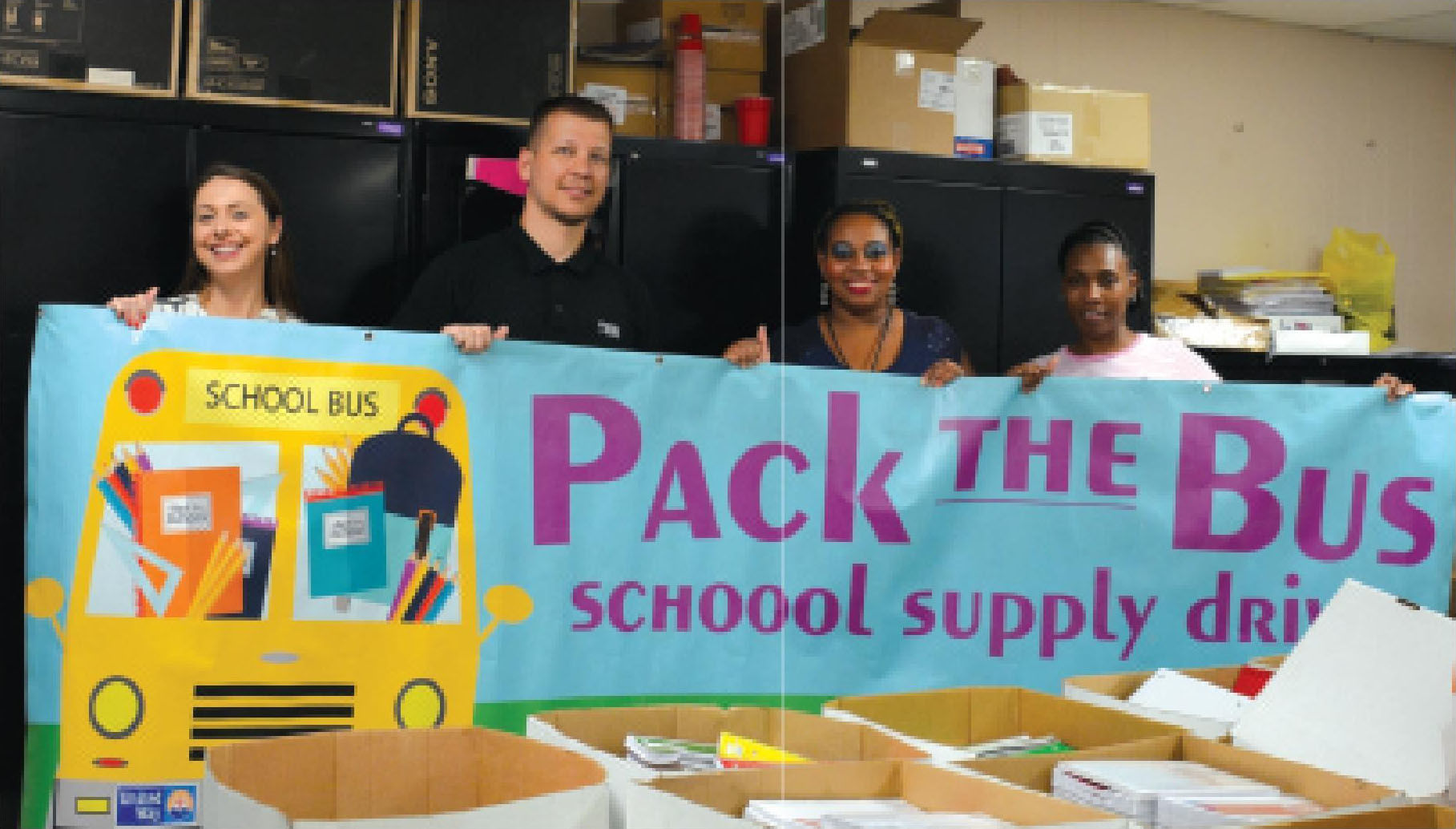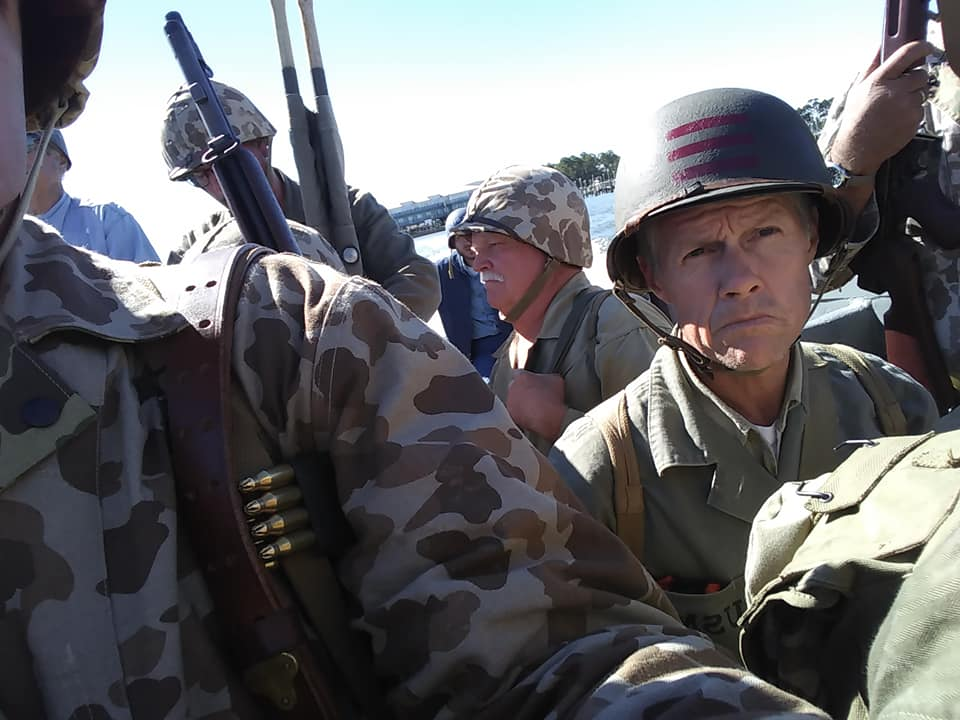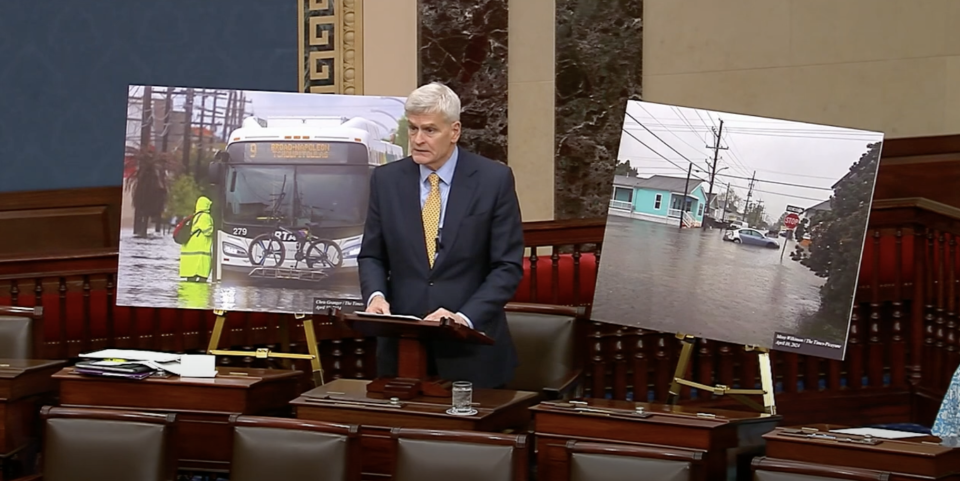
How to Make Your Empty Nest an Empowering New Chapter
November 14, 2018
PACK THE BUS
November 15, 2018Besieged by engine trouble and a bad bilge pump, snared by a crab line and robbed of essential supplies, a local crew of WWII re-enactors braved punishing waves and sheets of rain to nurse a vintage troop-landing vessel more than 200 miles to a fort on Alabama’s Gulf Shores, and 200 miles back to its Terrebonne Parish home.
Their mission was to honor more than 1,000 U.S. service members killed in the Pacific theater battle of Tarawa, which occurred 75 years ago this month. The re-enactment was held at the Fort Morgan historic site Nov. 2 through Nov. 4.
The PA-33 Higgins boat is similar to the Navy vessels that carried many marines and sailors to their deaths at Tarawa, but also to victory during the Nov. 23, 1943 assault on that island and others in the Japanese-held atoll. Higgins craft were also used at the storming of Normandy beaches on D-Day. The vessel is permanently displayed as an asset of the Houma Regional Military Museum, which offers trips on Terrebonne waters for the military history-minded. The craft saw actual service during the Vietnam Era, attached to the U.S.S. Austin. The Vietnam Era landing crafts were fiberglass. Those used in WWII were made of wood.
The trip to and from Alabama, however, was described as a far different experience from those halcyon tour voyages.
“When you’ve got three-and-four-foot seas, when you hit the seas from the side, this thing rocks. It’s not a V-bottom boat,” said C.J. Christ, the 89-year-old Air Force veteran who led the expedition. “It’s like a cigar box with an engine on it.”
C.J., president and CEO of the Houma museum, led the PA33 Higgins boat from Houma to a re-recreation of battles at Tarawa and Makin Island, held on the Alabama coast. The boat is a Landing Craft Vehicle Personnel — or LCVP – a flat bottomed vessel. Its designers took lessons from boats that easily operated in marshes and swamps. The like vessels used in WWII were manufactured between 1943 and 19445 in New Orleans.
Call for Vessels
The voyage itself lasted about 20 hours each way, Christ said.
“One of the most tricky parts was in the last 15 minutes,” he said of the homeward voyage. “(There were) two barges side by side, the one on this side was crowding us into the bank within twenty feet of the piling. Talk about close.”
C.J. was aided by Kim Lirette, a licensed vessel captain, Jackson Bridges, a museum volunteer and docent and his brother Christian Bridges, an auto mechanic who works on vehicle restorations for the museum. Matt Porche of Houma, a museum board member, traveled to Alabama and served as one of the vessel’s operators.
The team had answered a call for vessels from Alabama’s Sgt. Foster L. Harrington Marine Corps League Detachment in Mobile. Junior Post Commandant Galen Wagner, had contacted the Houma museum during a quest for landing craft to commemorate the 75th anniversary of Tarawa and Makin. Transporting the 36 foot long by 10 feet wide vessel overland would have required special equipment and permits. vessel, which is 36 feet long and 10 feet wide, is no small feat, and would require special equipment and permits. Galen said that C.J. proposed delivering the vessel over water, covering the entire 180-mile distance under its own power.
Christian took 8 days of vacation time from his job as an auto-mechanic to join the expedition. These skills came into play during the voyage and were essential to keeping the vessel running throughout the voyage, C.J. said.
“Thank God he was here to clear the filters,” C.J. said. “’Cause there were times, especially in the last mile or so…”
Christ made sounds like a sputtering motor to emphasize his point.
Neglected History
Christian Bridges’ brother, Jackson, agreed to serve as a deckhand. A helper at the museum, Jackson, 23, said the project was in his mind important and necessary.
“Our history is being neglected,” Jackson said. “If we don’t know where we came from, we’re doomed to repeat our mistakes.”
76 Hours of Hell
The Battle of Tarawa, well-documented in various official histories of the war, was one component of a larger U.S. invasion operation to capture Japanese-held territory within the Pacific’s Gilbert Islands called Operation GALVANIC.
Th invasion began Nov. 20, 1943 with orchestrated attacks on islands within what is referred to as the Tarawa Atoll, as well as Makin Island, 100 miles to the north. The atoll is about 2,300 miles southwest of Honolulu and today is part of the Republic of Kiribati. More than 1,000 U.S. troops were killed and more than 2,000 injured.
Of 3,400 Japanese troops only 17 survived, according to U.S. Department of Defense publications. Of 1,200 Korean slave laborers on the islands just 29 lived.
Historical accounts include heart-wrenching scenarios describing scores of marines killed as their landing boats were mired in waters of the low tide. Once landed at the beach, surviving marines were pitched into brutal hand-to-hand combat.
The Re-Enactment
During the re-enactments Christian was in charge of dropping the ramp to allow the soldiers to storm the beaches. Christ spoke with both pride and excitement of the part the group played in the re-enactment. During each trip, the group brought 5 loads of 24 men. The first group were Army while the other 4 were Marine.
The LCVP can haul more men than it did during the re-enactment, but because the crew lacked enough life-vests to carry more passengers, Christ said they opted for less to remain within Coast Guard regulations.
Originally two Higgins boats were to take part, but one backed out at the last minute. Galen Wagner said that PA33-21 was essential, and without the crew’s effort, the event couldn’t have been the same
“We hit the beach 5 times,” said Christ. “When [Christian] let that brake go, that great big steel door hit the sand. It still has some sand on it. Those troops went out on the beach.”
The “troops” deployed included Galen Wagner, who acted as a battalion commander for the re-enactors. He explained how the re-enactors had a responsibility to accurately portray those who served in combat, out of respect as well as historical propriety.
Charging from the PA-33’s metal bed up the shore and into a hail of blanks, the re-enactors performed a portion of the intense moment, and gave the spectators a glimpse of this stage of The Pacific Ocean Theater.
Bones of My Grandfather
One re-enactor with deeper ties sought not only to portray, but to experience what it felt to charge from PA33-21 in the shoes of his grandfather.
Clay Bonnyman Evans is the author of “Bones Of My Grandfather: Reclaiming a Lost Hero of World War II.” (Skyhorse Publishing, N.Y., 2018) The book tells the story of Evans’ own grandfather’s struggle and ultimate demise as a result of leading a group of engineers at Tarawa.
During his ride on PA33-21, Evans said he closed his eyes and reflected on the mindset his grandfather must have had in those moments. He expressed gratitude for the crew’s efforts and said that it gave him a high point among many highpoints during the experience.
“Not only was I impressed that it was there,” Evans said of the boat. “But what really floored me was they floated that thing for 3 days to get it there.”
Mosquitoes and waves
After the re-enactment, the crew of the PA33-21 said their goodbyes and began their voyage back to Houma.
The trip home was described as a nightmare scenario. The vessel’s floodlight was stolen during a stopover in New Orleans. The vessel’s lack of suitability for long distance travel proved a challenge. Chugging at slow speed in near-shore but often choppy waters, the crew was besieged by mosquitoes.
Galen Wagner said even he wouldn’t want to take on such a feat after the three days of the performance, and commended the crew for their efforts.
“This event was great because they came,” said Wagner. He then added that between the performance and the toll the travels took, “They worked alot harder than we did.”
Fresh off the boat, the crew reflected on their journey and realizing just how far they had traveled, when Jackson casually stated that it might be a record for that type of vessel. Since then, Matt Porche said he has reached out to The Guinness Book of World Records to find out.
“The experience went beyond mere re-enactment, and this is one of the reasons I am a volunteer,” Matt Porche said. “There are times when we have a museum visitor coming for a ride in the boat. When you get to watch their facial expression and see that it hits home, hits in their heart, in terms of what these service members went through, it feels good inside to know that you can touch someone like that.”
Matt Porche and others involved with the boat project said that without help from local businesses, it would not have been possible. Among the sponsors were Rock’s Electric; Rio Fuel and Supply; Houma Filter; Mike Bergeron; Gator Machine Works; Houma Machine and Propeller Shop; Charlie Kock; Dulac Shipyard; David Chauvin and Uneeda Cleaners dry cleaning and restoration.
“As the 75th anniversary this was a commemoration of the sacrifices made by the Navy, the Army and the Marines on that day,” Porche said. “To honor those guys, any small part we played in that gives us a certain pride, and pride in the museum helping make that happen.”















